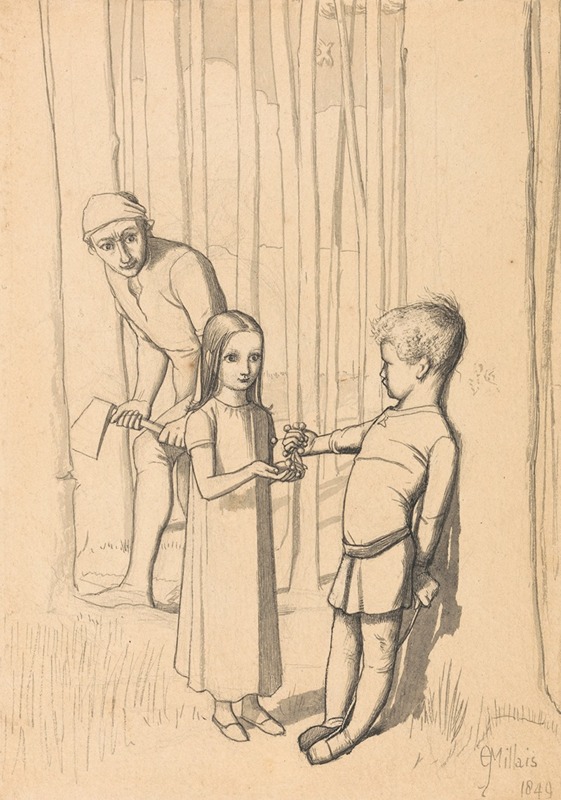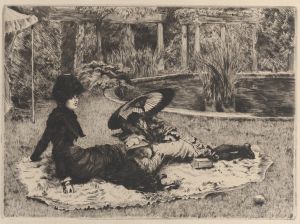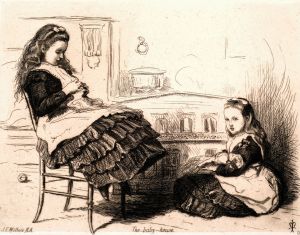
Study for The Woodman’s Daughter
A hand-painted replica of Sir John Everett Millais’s masterpiece Study for The Woodman’s Daughter, meticulously crafted by professional artists to capture the true essence of the original. Each piece is created with museum-quality canvas and rare mineral pigments, carefully painted by experienced artists with delicate brushstrokes and rich, layered colors to perfectly recreate the texture of the original artwork. Unlike machine-printed reproductions, this hand-painted version brings the painting to life, infused with the artist’s emotions and skill in every stroke. Whether for personal collection or home decoration, it instantly elevates the artistic atmosphere of any space.
"Study for The Woodman’s Daughter" is a preparatory work by Sir John Everett Millais, a prominent British painter and one of the founding members of the Pre-Raphaelite Brotherhood. This study was created as part of Millais's process for developing the final composition of his painting "The Woodman’s Daughter," which was completed in 1851. The Pre-Raphaelite Brotherhood, established in 1848, sought to reject the academic conventions of the time and instead emphasized detailed realism, vibrant colors, and themes inspired by literature, nature, and moral narratives.
The study reflects Millais's meticulous approach to his art, as he often created detailed preparatory sketches and studies before executing his final works. "The Woodman’s Daughter" is based on a narrative poem by Coventry Patmore, which tells the tragic story of Maud, the daughter of a woodman, and her ill-fated relationship with the son of a local squire. The painting explores themes of class disparity, innocence, and moral consequences, which were common subjects in Victorian art and literature.
In this study, Millais focuses on the figures and their interaction, capturing the emotional tone and physical details that would later be refined in the finished painting. The work demonstrates his characteristic attention to detail and his ability to convey complex emotions through gesture and expression. As with many of his preparatory works, the study provides insight into Millais's creative process and his dedication to achieving a high level of realism and narrative depth.
The final painting, "The Woodman’s Daughter," was exhibited at the Royal Academy in 1851 and received significant attention for its technical skill and poignant subject matter. The study, like many of Millais's preparatory works, is valued for its role in the development of one of his notable paintings and for its standalone artistic merit.
Further details about the specific medium, dimensions, or current location of the study are not widely documented.


















